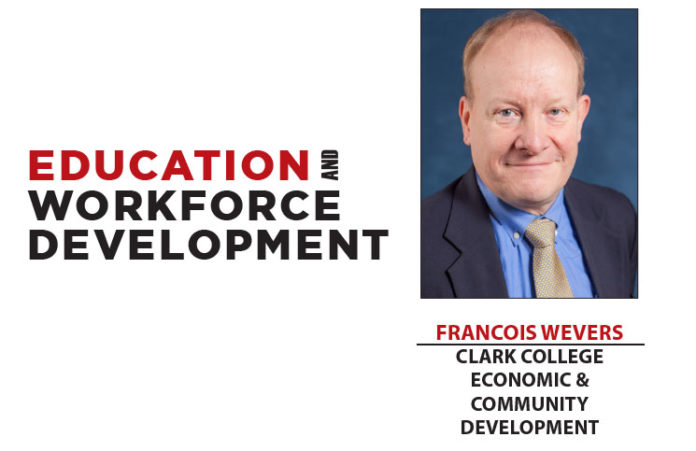We’ve all been there. You’re suddenly tasked with influencing a project change at work — or, perhaps, you’re ready for a new home and your challenge now is to convince your partner to move. The need to motivate others occurs often in our day-to-day lives; how do you influence others effectively?
We’re encouraged to welcome leadership roles, to dream big, but once reality sets, you’re often left with the monumental task of influencing other people toward action. Motivating and influencing others is serious business — and I recently spoke with Janell Payne, a communication coaching/training professional and Clark College Economic & Community Development instructor, whose in-depth knowledge of speech and communication theory provides insight on how best to influence outcomes.
When your goal is to influence a decision, understanding your audience is priority one. Your audience may encompass one person — or a room full of thousands. Is the audience your husband, boss or a large team of executives? Is the audience more technical in nature or big-picture? By getting clear on who your audience is first, you naturally begin to consider the other person’s perspective. Your approach becomes outward centric, in service to others. Knowing your audience also provides an unexpected bonus: When you know your audience, you gain the ability to expect and then mitigate resistance, reducing your own anxiety.
Sometimes the information you’re presenting needs an extra dose of optimism — and Janell recommends an approach that addresses the problem, but positions the proposal as an opportunity to your audience. The opportunity’s message should be proactive and simple, leaving your audience with memorable content. Do you want to convince your partner to move from Portland to Vancouver? Here’s how Janell positions the opportunity: Moving across the river will make us more money. With this statement, Janell delivers the opportunity in one sentence, using fewer than 10 words.
When tasked with influencing and motivating others, often the presentation of your idea causes the greatest uneasiness. A colleague recently told me that for years she managed presentation anxiety through the exhausting effort of writing detailed notes and practicing the presentation repeatedly to the point of memorization. While my colleague is convinced she’s found a way to navigate stressful presentations, Janell advises against the memorization approach as it often leads to diminished conversational flow, which is so important when you’re aiming to connect and influence.
An improved presentation preparation strategy involves a lot less verbiage and an outline filled only with short prompts, detailing the logical flow of the content you want to convey. When influencing others, your goal is to keep the conversation going until an action is taken — and losing the script helps you get there. When you’ve memorized content and find yourself in front of an audience, there is always the possibility you’ll forget portions of what you practiced. You may also become distracted as you take in the real-time, non-verbal feedback the audience exhibits, leaving you to unravel directly in front of everyone.
Body language shapes who you are and matters when your goal is to influence others to take action. When you’re presenting ideas, you want to sound and be seen as confident. In an interpersonal setting, your body language should convey an approachable, empathetic message. It’s also useful to tilt your head as you listen to someone speaking — something you would not do in a formal setting. When presenting formally, keep your body balanced, take up space with large hand gestures and maintain an open body orientation.
Body language is open to interpretation and varies depending on culture. The best practice for North America is to maintain eye contact in both interpersonal and formal settings. While you may be crossing your arms because you’re cold or familiar with the audience, other people may be reading your stance in a different way. As a safety precaution, Janell recommends keeping your hands off your body when delivering information.
There is a lot to consider when presenting information — and your reach and influence heavily depends on your ability to communicate critical messages with confidence and clarity within various contexts. Join Clark College Economic & Community Development and Janell Payne Thursday, Feb. 7 to explore how to influence and motivate others in part one of the Driving Performance Through Leadership training series. To learn more, visit ecd.clark.edu/go/leadership-training.php.
Francois Wevers is the director of Customized and Contract Training at Clark College Economic & Community Development. He can be reached at (360) 992-2466 or via email at fwevers@clark.edu.




